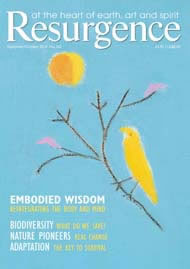The numbers are staggering: 2.4 billion people around the world cook with animal dung or, if they’re lucky, wood, on basic stoves which are often no more than a few rocks clustered together. Sadly, 1.6 million women and children die every year from using these stoves. Over 10 million Cambodians alone use wood for cooking putting severe pressure on Cambodia’s remaining forests.
But amid all these numbers, there are some positives: in Cambodia, a French-based organisation called GERES (Group for the Environment, Renewable Energy and Solidarity) is working with local craftsmen to make stoves that are 22% more fuel efficient, reducing demand on local forests and creating 1,100 local jobs. In March this year, in a small village outside Phnom Penh, the one-millionth New Lao Stove was made and sent to market. This is significant because not only do these stoves burn considerably less wood, they last two to three times longer than traditional ‘stovesbodge’ and are now present in nearly half of all urban Cambodian households, saving over 500,000 tons of CO2 emissions annually, and reducing indoor air pollution and consequent ill health.
“This is proof that disseminating large numbers of improved cookstoves is not a dream anymore, but can be a reality,” said Iwan Baskoro, technical manager of the GERES. By combining a traditional, local stove design with the latest knowledge of combustion and thermal exchange, GERES was able to create a simple, locally-crafted stove that appealed to the community, and at the same time saved almost a quarter of their precious fuelwood. And because families using the New Lao Stove need less wood, over 5,000 hectares of Cambodia’s natural forests have been saved from destruction.
This is good news, but to GERES, this is just a beginning. “There are over two billion people in South-east Asia who need improved cooking stoves,” says Baskoro. “They have the right to use these stoves, and we are determined to fulfill their rights.”








